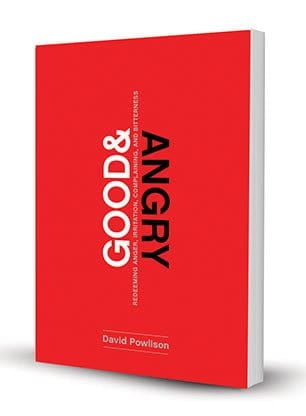⏱️ Estimated Reading Time: 4 min read
Which angry person are you? The Domestic Gunslinger? The Volcano? The Iceberg? Maybe you don’t think you’re an angry person at all like I did before reading this book. Or maybe, you think your anger is always and on every occasion sinful. This book is for you. All of you, in fact, as Chapter 2 points out. In Chapter 2, called “Do You Have a Serious Problem With Anger?” author David Powlison says the following:
“Yes” (23).
That is the entire chapter. Simple as that. We all have a serious problem with anger. It takes different shapes and sizes for us all, but it affects each of us. Whether we fall on the spectrum of admitting our angry tendencies or in complete denial of it, Powlison makes the case that because of the human heart’s sinful condition, anger touches each of us. And because it is so widespread, the concept of redeeming anger becomes so important, although it often goes unnoticed in our culture. Thankfully, Powlison, a seasoned counselor, has labored to write one of the most instructive, theological, and significant works on the topic of anger out there.
The thing I appreciate most about the book is just how broad the brushstrokes reach. In the first section, comprised of the first 3 chapters, Powlison backs up his claim in Chapter 2, that based on of what we know about anger from experience, we are all aware of our anger problem, and the anger problem facing humanity as a whole. Powlison then moves to the next section of defining what anger is. He sums it up well on page 39, saying that every instance of anger provokes a response of “I disapprove.” Of course, as we get into the book, we realize that sometimes this is a good and righteous response, other times not so much. In arguably the most important chapter, Powlison suggests that anger is not merely an “it,” but it’s what we do, touching our physiology, our emotions, our mind, our actions, and our motives:
“One key to getting anger straight is to understand that when you are angry, you are doing something. Anger is not an ‘it.’ Anger is not just one part of you. Anger does not ‘happen’ to you. You do anger” (46).
But this book is not only helping us learn about anger but how we respond to anger as well. With a healthy understanding of anger in mind, we can now fully understand what true mercy is, “a response to feeling displeasure” (72). Mercy is a four-fold process of patience, forgiveness, charity, and constructive conflict.
Powlison then moves into a presentation of the good anger of God, and what He did about it. This helps us learn authentically about grace, and in turn has much to teach us about how we should respond in anger. We have to learn key steps to dismantling our anger, as Chapter 13 illustrates. Anger at every level, whether it’s self-imposed frustration at ourselves, everyday annoyances, or weighty bitterness at God, can be redeemed by understanding the righteous anger of Jesus, who looked sin in the eye and was willing to step in on our behalf in divine mercy.
This book’s value in terms of the theological and practical application cannot be overstated. This is not a book left to only crisis counseling appointments or long-lasting feuds. This book has much to say about the man who cuts us off on the highway, the way we punish ourselves, and our bad attitude with God sometimes. Its focus is narrow, but the depth and breadth of the book are significant. I have already benefitted greatly from the wisdom of Good & Angry and hope to continue to refer to it to learn more about the redemption of my anger.




